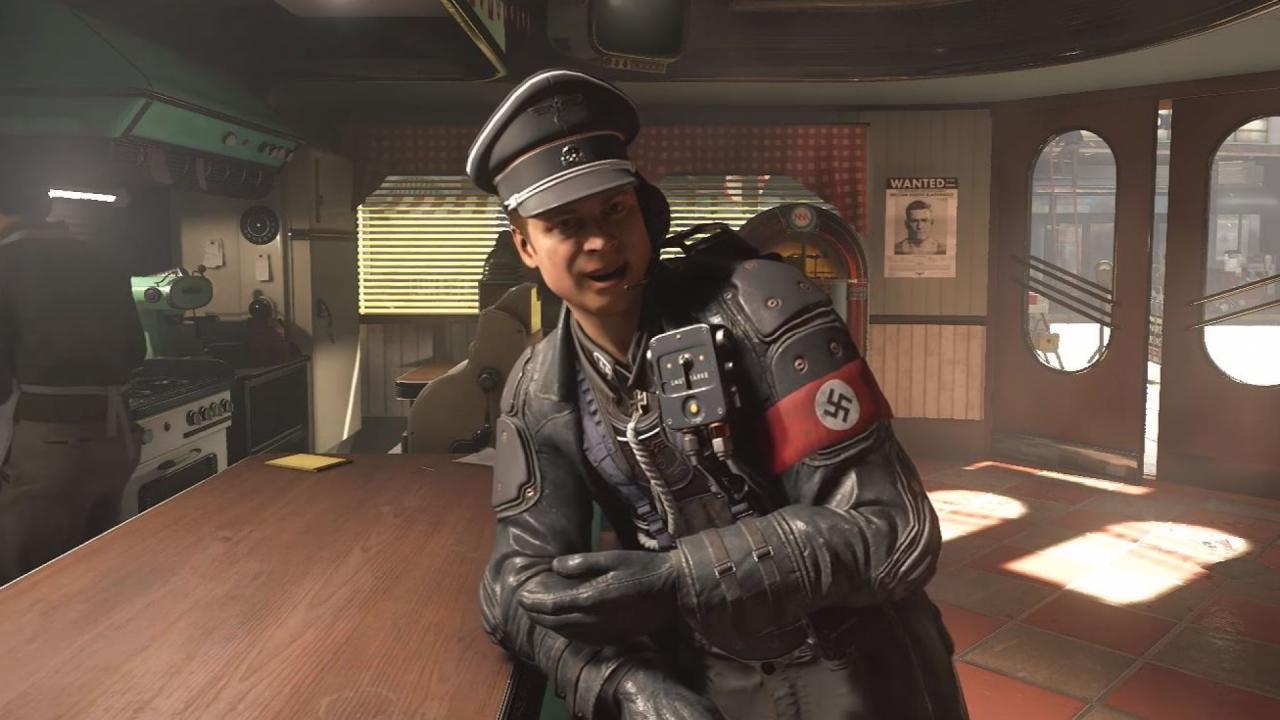Wolfenstein II: The New Colossus was never meant to be an “important” game. It’s the gloriously stupid follow-up to the similarly ridiculous Wolfenstein: The New Order. Like its predecessor, it features an alternate-1960s in which the Nazis won World War II, and you and your crew go about slaughtering said Nazis. Despite its ultra-violence, few considered the first game to be especially controversial. Surprise! That’s changed.
Unlike The New Order, the majority of Wolfenstein II takes place in America. This led to an ad campaign focused around, well, Nazis in America, which didn’t go well with certain corners of the internet. It was a situation that most companies would pull back from, but the game’s publisher, Bethesda, showed tremendous backbone by sticking to their guns and taking a bold “Nazis are bad” stance. So the game came out, the people who wouldn’t play have played the game anyway kept away, and the rest of us had a pretty great time.
Perhaps it’s best that the game didn’t reach a lot of people who have grown sympathetic to Nazis, because it’s actually far more progressive than even advertised. The first couple of hours consistently draw connections between the anti-semitism of Nazi Germany and the always-simmering influence of white supremacy in America. The protagonist’s father is revealed to have been an abusive, sexist, wildly racist man, constantly ranting about the need to protect the white man from foreign invaders. The Nazi antagonist of the game is similarly abusive to her own daughter, cruelly insulting her for her weight and her aversion to torture.
It would have been easy for developer Machine Games to hew to the simplistic view that Nazis were an evil-but-specific phenomenon, something that could only exist under the specific circumstances of 1930s Germany. But Wolfenstein II, which was largely written and planned BEFORE the alt-right movement became public and empowered, is far more cautionary, suggesting that our society (and likely most societies) are largely kept in check due to public pressure to be decent. The player eventually visits a town in Texas in which the KKK has eagerly embraced the new Nazi regime, and are now free to parade through the streets in their white hoods and gowns, mingling with their Nazi overseers and happily learning German. The game posits that when the most hateful and destructive thoughts and practices are normalized by those who are in power, the despicable prejudices that existed only on the fringes and the underbelly of the country come to the surface and begin to infect daily life. It’s incredible how prescient this sentiment has proven to be.
But enough about The New Colossus’s accidental poignancy. Is it fun? On a purely technical level, hell yes. The controls (at least how I played it, on a PC with a keyboard and mouse) are tight and responsive, giving player character BJ Blaskowicz an advantage over his Nazi foes. Even while confined to a wheelchair in the game’s opening level, BJ is pleasantly mobile, able to turn quickly and rush to cover at a moment’s notice. The enemy doesn’t call him “Terror Billy” for nothing.
That being said, on the closest thing to a default difficulty (Bring ‘Em On), BJ dies surprisingly quickly. This is, in part, to reinforce the narrative of the game; after being blown open by a grenade at the end of the last game, he spends most of this one in very rough physical shape. On the one hand, this can be sort of frustrating in a game meant to provide players with a sense of empowerment. Even with his excellent reflexes and speed, it’s hard to feel like a legendary Nazi-killer when a single enemy can take you down in roughly 1 second of concentrated fire. But on the other hand, it represents a surprising commitment to narrative that is rarely seen in games, let alone first-person-shooters.
Like The New Order before it, The New Colossus puts a lot of care into making the player connect with its characters. It frequently returns you to the Resistance’s home base between every set of levels, giving you free reign to explore and interact with your allies. That’s not to say that the game presents these characters as normal human beings; every major character is WAY larger than life. But they’re all big and crazy in really specific ways that lend the game its charm.
This complete aversion to subtlety is also a guiding ideology in the game’s story and progression. I don’t want to spoil anything, but there are two different points in the game that had me cracking up at just how absurd Machine Games was willing to get. The sheer audacity of some of the plot twists and set piece moments are unmatched by almost anything else this year.
I obviously found a lot of things to like about The New Colossus, a game full of bold decisions that are bound to split its player-base. For every major, commendable decision it makes (introducing serious socio-political issues, tying BJ’s health to his narrative condition, etc.), there are arguable downsides (messaging being overruled by the sheer silliness of everything else, feeling dis-empowered or frustrated). The result is far from a perfect game, and arguably less consistent than its predecessor. But I’d still recommend The New Colossus to anybody with an itchy trigger finger and a desire for games that buck the status quo.
